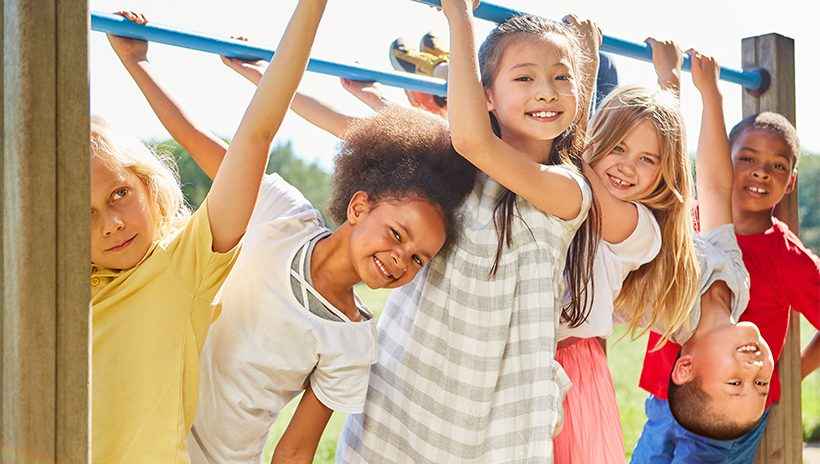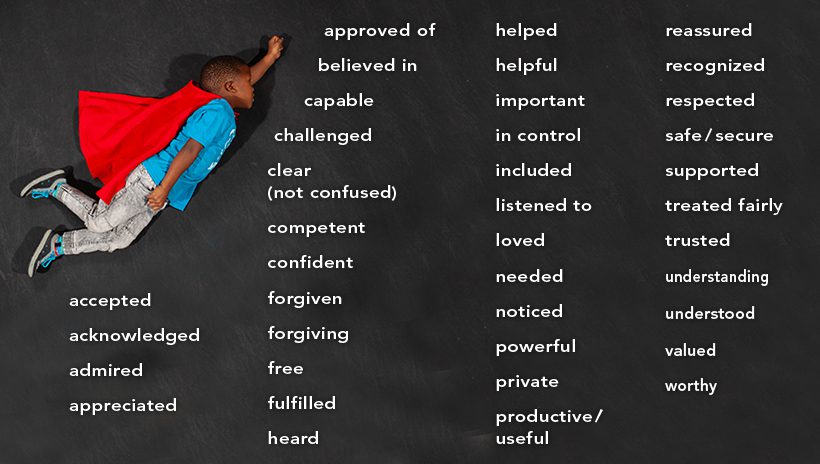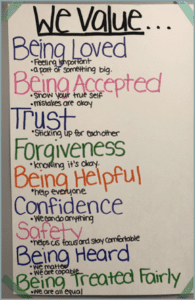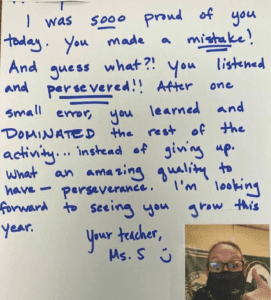SEL & Beyond: Relationship Skills

Welcome to the fifth blog post of our six-part blog/workshop series on Social and Emotional Learning (SEL) for grades K–12. One of the most trusted sources for knowledge about high-quality, evidence-based social and emotional learning is The Collaborative for Academic, Social, and Emotional Learning (CASEL). This post will focus on CASEL’s SEL competency: Relationship Skills and will include real-life examples and engaging strategies to be used in the classroom and online.
We’ve offered numerous SEL strategies throughout our blogs to provide you with a menu of options. We suggest picking one strategy at a time and know that you’ll have several options to choose from during the course of the school year. Don’t feel like you have to do all the strategies at once. We are here to support you, not overwhelm you. We know you do not need one more thing on your plate. The good news is:
“SEL is not one more thing on your plate; it is the plate.”— Dr. Amy Cranston
SEL can take place everywhere: school, online, and at home! At school, educators can embed SEL into academic content and instructional practices or teach SEL as a stand-alone lesson. SEL can also be developed through social experiences at recess, lunch, in the hallway, and after-school programs. The frequency of SEL practices contributes to a culture of safety, inclusion, and belonging.
| Competency | Skills We Need Now |
| RELATIONSHIP SKILLS: The ability to establish and maintain healthy and rewarding relationships with diverse individuals and groups, communicate clearly, listen well, cooperate with others, resist inappropriate social pressure, negotiate conflict constructively, and seek and offer help when needed. | Relationship skills are essential to help us build and maintain meaningful connections across race, culture, age, and distance; support one another during collective grief and struggle; and collaboratively find solutions to new obstacles. |
* CASEL, 2020
“Relationships are at the heart of schooling.”—Mark Twain
Relationships make us feel connected—plain and simple. When we experience successful relationships and a sense of connectedness and belonging, we do better. It’s the same for our students. All aspects of successful relationship building are interconnected with the other four SEL competencies.
Getting to know your students is the foundation of building a strong relationship with them. Here are two quick and easy strategies to get to know our students that can be used in a physical classroom as well as online.
In addition, here are some other suggestions on how to build relationships that foster community virtually and support a sense of belonging. While we don’t often highlight individual contributors, we loved these 33 ways to build relationships during virtual learning.
Benefits of Relationship Building
There are a myriad of benefits to building positive relationships. At the most fundamental level, we are social creatures designed for human connection.
Specifically, teacher-student relationships can promote school success in the following ways. They can:
- Strengthen academic achievement
- Reduce chronic absenteeism
- Promote self-motivation
- Strengthen self-regulation
- Improve goal-making skills
Beyond academic success, when teachers have good connections with their students, it can improve classroom behavior management, which leaves teachers more time to actually teach. A teacher’s impact on their students can last long after the end of the school year (we share a powerful example of this below). When students have a meaningful connection with their teachers, they’re more likely to form similar relationships in the future (Waterford.org). Here are a few strategies you can use to get to know your students:
Characteristics of a Positive Relationship
Once upon a time, the fields of child psychology and child development warned that too much love was dangerous for a child and would result in them being spoiled. However, current scientific research has taught us that children do best with demonstrative love and caring (Brackett, 2019). We find this checklist to be a great resource to help you gauge your connection with your students.
Let’s do a little exercise:
Think of your most challenging student. You know who we’re talking about, the one that keeps you up at night. Now, go through this list, and write down all of the feelings that the student does not experience in your classroom. For instance, in your opinion, does this student feel accepted? What evidence supports that claim?
What most teachers come to realize during this exercise is that our most challenging students are not experiencing the majority of these positive feelings in the classroom.
Let’s say I have a challenging student named Dee. After this activity, I realize that Dee does not feel important, powerful, in control, or treated fairly. What can I do with this information?
I can help Dee feel in control by giving him choices. Choices also help improve engagement and motivation.
I can help Dee feel important, valued, and trusted by giving him responsibility, perhaps in the form of a classroom job. In an online setting, maybe Dee’s job is to remind his classmates of the classroom norms.
I can help Dee feel empowered by giving him a voice. Students LOVE when they get to vote on things, whether it’s on an activity or the best place in town for tacos.
I can help Dee feel treated fairly by making sure he understands classroom rules and consequences. When rules and consequences are made clear to students, it helps take the teacher out of the equation so that students don’t feel judged.
When things are going well with Dee, I can use the list to take note of the characteristics that are present and continue to emphasize them. Alternatively, if I start to experience challenges again, I can use the checklist to see what isn’t present and focus my attention there.
Empowering Students
You can also use this checklist by sharing it with your students! They LOVE this activity. Here is a fourth grade classroom identifying which feelings are the most important to them. In groups, students used this sentence frame to share their thoughts and opinions. You can differentiate this activity for younger students by modifying the list and incorporating visuals.
Strategy: Classroom Values
Once students have identified which feelings are the most important to them personally, you can have them come together as a class and determine what the class collectively values. Afterward, they can make a poster and display in the room; then, whenever anyone behaves out of accordance with their values, they can remind each other and hold each other accountable. You can also adapt this strategy to a digital format by sharing the list online.
Additional Reflection Questions for Students
Ask students:
What can I do to help you feel more _____?
What can you do to help each other feel more _________?
How could you add to or modify this list?
Connecting Across Cultures
Language and culture are essential to our identity. Building meaningful relationships with all students means understanding who they are at their core. Stakeholders who are culturally and linguistically responsive create more meaningful, sustaining connections with students. Cultural and Linguistic Responsiveness (CLR) is the validation and affirmation of indigenous (home) culture and language with the purpose of building and bringing the students into success in the culture of academia and mainstream society (Hollie, 2011). When we validate and affirm a student around these essential aspects of their identity, they feel seen, heard, and valued. Becoming a culturally responsive educator does not happen overnight or in reading one blog post, so here are a few resources to support you:
5 Ways to Create a Culturally Responsive Classroom
3 Tips to Make Any Lesson More Culturally Responsive
Relationship Snapshot
Communication is essential to any relationship. As a teacher, I used to think I didn’t have the time to communicate personally with all of my students, but I realized that making an investment in a relationship with a student early on pays dividends throughout the year.
“Either we spend time meeting children’s emotional needs by filling their cup with love, or we spend time dealing with the behavior caused from their unmet needs. Either way we spend the time.”—Pam Leo
Take a look at this note that was given to a student from a teacher.
This is also a fantastic example of how to encourage a growth mindset by giving specific and meaningful praise.
How many of those positive feelings do you think this student experienced?
Make Positive Phone Calls Home
Oftentimes, students are used to teachers reaching out to their parents or guardians for disciplinary reasons such as absenteeism, their behavior in class, poor grades, etc. During those points of contact with a student’s parents, our connection with the student is likely strained. We understand now, more than ever, connecting with students in a virtual setting can be especially challenging. One way to connect with students and parents is to make positive phone calls home. You can “catch” the student doing something positive and call home to tell their parent/guardian about it. We’ve received a lot of positive feedback and heartwarming stories from teachers who said parents have cried upon hearing something kind about their child and that it “made their week.” In turn, the student’s behavior is acknowledged and positively reinforced.
Check out the teacher testimonial below.
Forgive
I ask students all over the country, from various backgrounds, to tell me which of those relationship characteristics was most important for them and the vast majority said:
Forgiveness.
Forgive your students. Say it out loud. We can’t just do it in our heads, they need to hear us say the words. Otherwise, students come into class carrying the weight of their previous day’s misbehavior. It’s essential that we distinguish the behavior from the student. If a student thinks they are “bad” that is exactly how they will show up. And the truth is: there are no “bad” kids. There are kids who don’t yet have the skills they need to regulate their emotions and behaviors. Emotion skills are acquired; emotional regulation is learned. Nobody is born with those skills in place.
HAVE FUN!
Classroom culture is a reflection of the teacher. If you are having fun, chances are your students are, too. So, if you’re finding that your energy and enthusiasm are waning (especially now), take a step back and ask yourself:
“What’s one thing I am excited about doing with my students today?”
Storytime
My eighth grade teacher, Mrs. Montgomery, was my favorite teacher of all time. She believed in me, gave me specific and meaningful feedback, challenged me, and took the time to help me after school. She was passionate about teaching. She called me a “good writer.” After eighth grade graduation, I lost track of her. But, I thought about her often. I went on to become a bilingual teacher, just like her. I even went on to teach in her classroom in my former school. Later, when I moved to Los Angeles to teach at USC, I shared stories about Mrs. Montgomery with my students.
In the summer of 2019, I was about to walk out on stage in front of an auditorium of Chicago Public School teachers when I looked out into the audience and saw none other than Mrs. Montgomery.
Naturally, I freaked out and cried and told everyone the story. Mrs. Montgomery—now Dr. Montgomery—and I hugged and cried. Twenty-three years later I finally got to tell my favorite teacher just how big of an impact she had on my life.
The moral of the story: Relationships matter (and also, Dr. Montgomery DID NOT age).
Teaching is hard work, especially now. But every single day we are given the opportunity to be someone’s Dr. Montgomery.
Additional Resources
It’s likely that our students are experiencing grief and loss during this time; they may have lost a loved one, and their learning environment probably looks dramatically different. They may even be experiencing household and community stressors in new and poignant ways. The Coalition to Support Grieving Students has developed a set of resources that have been broadly approved by leading professional organizations to guide educators and other school personnel in supporting and caring for their grieving students.
See also:
The chapters of this series:
- Introduction to Social and Emotional Learning
- SEL & Beyond: Self-Awareness
- SEL & Beyond: Self-Management
- SEL & Beyond: Social Awareness
- SEL & Beyond: Responsible Decision-Making, the next chapter in this series.
About the Authors

Trisha DiFazio is an author, education consultant, and former adjunct professor in the Rossier School of Education at the University of Southern California (USC). She is passionate about empowering teachers and students around Social and Emotional Learning, Cultural Responsiveness, and Mindfulness.

Allison Roeser, Master of Health Science (MHS) and Professional Certified Coach (PCC), has almost two decades of experience working with leaders in education, child welfare, and social change. As an avid learner of mindfulness practices, Allison has seen firsthand the value of integrating self-awareness into professional and personal development.



